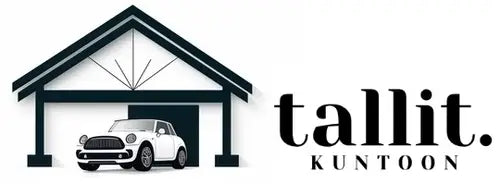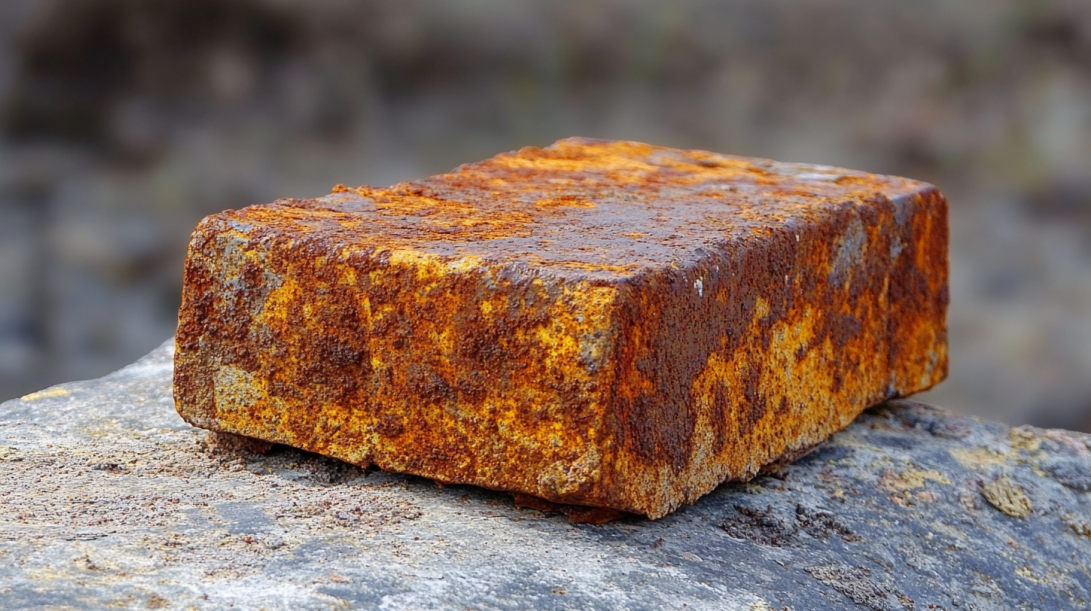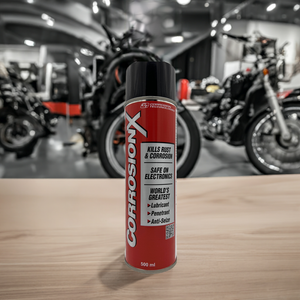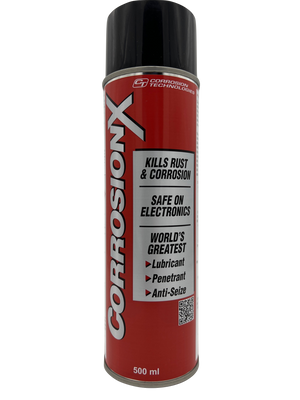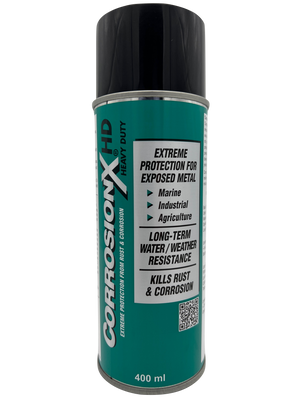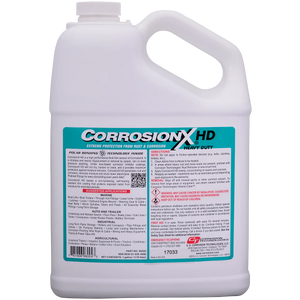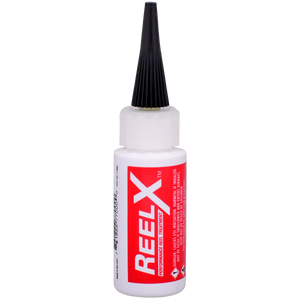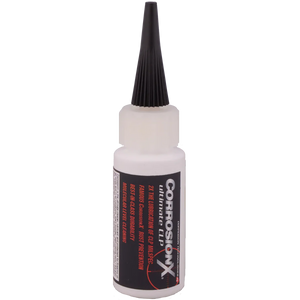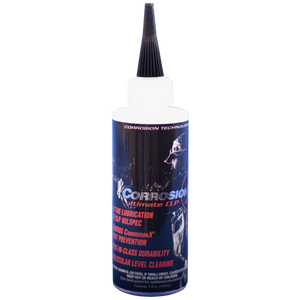The Hidden Menace: Understanding Rust
A Chemical Chain Reaction with a Vengeful Twist
Let’s start at the very beginning. Rust isn’t just an eyesore or a simple stain—it’s actually the result of a full-blown chemical reaction, more formally known as oxidation. Think of it like a mini cosmic drama happening on the surface of your metal. Iron, a major component in steel, loves to stay solid, strong, and reliable. However, when you introduce oxygen and water (or even just moisture in the air) into the equation, iron quickly begins its transformation into iron oxide, commonly referred to as rust.
Here’s how it plays out in simple terms: metal, oxygen, and moisture combine forces, forming new compounds on the surface. This chemical reaction gradually steals electrons from the iron atoms. You might envision the iron atoms as loyal soldiers standing guard in perfect formation, only to be ambushed by oxygen and water, which break their ranks and create those crumbly, flaky, brownish deposits we call rust.
Oddly enough, you won’t find rust forming on metals that don’t contain iron, like aluminum or copper—those get their own forms of corrosion. Rust specifically refers to the orange-brown or red-brown oxide that shows up on iron and steel. Although we casually call all forms of metal decay “rust,” it’s essential to keep in mind that rust is a unique subcategory of the wider corrosion family.
Why Moisture Is the Mischief-Maker
Picture a stage where water is the star performer in a grand play about metal destruction. We know that oxygen plays a primary role in the oxidation process, but it’s water—or even humidity in the air—that does a lot of the backstage work. Moisture helps electrons move more freely between iron and oxygen, accelerating the conversion to iron oxide.
If you live near a lake, in a humid climate, or especially close to the ocean, you’ve likely noticed rust showing up faster than it would in a dry, inland place. That’s because salty air (packed with sodium chloride) or heavily humid conditions act like VIP passes for water molecules, letting them set up shop on the metal. Once the water has settled in, it’s party time for the oxidation process.
It’s a bit like laying down a welcome mat for rust. And once rust is invited in, it can be surprisingly stubborn about leaving, often requiring considerable effort to remove.
Rust vs. Corrosion: Spot the Difference
Corrosion: The Big Umbrella
Imagine corrosion as a big, wide umbrella that covers a variety of metal deterioration processes. Rust is only one part of that larger picture. Yes, rust is the most famous member of the corrosion family—like the celebrity who gets recognized everywhere—but there are plenty of other forms of corrosion out there.
For instance, copper turns green when it corrodes (we see that greenish patina on old copper roofs or the Statue of Liberty), aluminum can develop a chalky, white film, and silver can tarnish into a darkish hue. Each metal has its own brand of “aging process” that fits under the corrosion umbrella. But none of these are precisely “rust,” because rust belongs to iron-based metals (iron and steel).
The Unique Problem with Rust
So, if rust is just one member of the corrosion family, why all the fuss? Here’s why: Rust spreads. It can cause a chain reaction that compromises the structural integrity of whatever it touches. Once rust starts to expand, it forms a fragile, flaky crust that exposes more of the underlying metal. That newly exposed surface is then free to begin rusting as well, if not protected immediately.
This domino effect can be particularly dangerous in things like car chassis, boat hulls, construction beams, and even the seemingly simple metal brackets you use for shelving. Corrosion in many metals is more superficial or forms a protective layer that halts further decay, but rust tends to be more invasive—like a splinter that keeps digging in deeper and deeper.
The Real Cost of Rust
It’s easy to see rust as a purely aesthetic issue—after all, your classic car or your shiny metal gate won’t look so appealing with big, brown patches of flaking metal. But the ramifications of rust go far beyond appearances. Let’s break down some of the hidden costs and headaches that come with unchecked rust.
Financial Impact: When Pennies Become Big Bucks
Rust has a sneaky way of draining your wallet. One day, you notice a couple of small rust spots on your favorite set of gardening tools. You figure it’s no big deal—you’ll get to it later. Then a few months pass, and suddenly you’ve got to replace the entire tool, because it’s become so weak it snaps the second you try to dig into firm soil.
This situation quickly escalates when we’re talking about vehicles. A minor rust spot around a wheel well can balloon into a major repair project, requiring new body panels or even frame reconstruction if the rust spreads underneath. And when it’s time to sell your car, rust can drastically reduce its resale value, even if you’ve taken great care of everything else.
Similarly, large industrial machines or specialized equipment can see their productivity and resale value plummet if rust is left untreated. Even in smaller-scale household scenarios, the cost of consistently replacing rusted screws, nails, hinges, and kitchen tools adds up over time.
Safety Concerns: When Rust Does More Than Ruin Appearances
While a few orange streaks might look harmless, rust can significantly weaken metal’s structural strength. This can turn into a major safety hazard, particularly when it involves load-bearing structures like steel beams in a building or the metal supports on a balcony. It’s easy to think of rust as just a cosmetic nuisance, but in reality, it’s more like a termite infestation of the metal world—steadily chewing away at the framework until a larger crisis occurs.
When rust invades mechanical components, it can jam moving parts, reduce efficiency, and eventually lead to sudden, catastrophic failures. Brakes on a car, for example, can corrode if exposed to excessive road salt or moisture over time—something no driver wants to take lightly.
Identifying Rust in Its Early Stages
Knowing the warning signs of rust can mean the difference between a quick fix and a full-on salvage operation. Rust typically makes its early appearances as small red or brownish spots, sometimes so faint you might overlook them. Over time, these little spots can become rough, flaky patches that spread if given the chance.
If you run your hand over the surface of a metal tool or piece of equipment, you might notice it feels slightly “gritty” where rust has started to form. This is your cue to act fast—because once deep pitting begins, it’s much harder to reverse.
It’s good practice to do routine checks. Give a quick glance at vulnerable spots, like the underside of your car, the corners of metal appliances or machinery, and anywhere else water might collect. Pay special attention after heavy rain or a trip near salty water. The faster you catch rust, the easier it is to banish.
Effective Rust Prevention Strategies
Now comes the heart of the matter: how to stop rust before it even has a chance to form. There’s no single “magic formula” that works for everyone, but rather a toolkit of best practices that you can adapt to your specific situation—whether you’re preserving a family heirloom or maintaining a large industrial machine.
Keep It Dry and Clean: The Foundation of Rust Prevention
Let’s start with the simplest, most universal tip: minimize contact between metal surfaces and water (or moisture in the air). You can think of water as rust’s best friend. If you deny rust its BFF, you already cut off a huge part of the problem.
- Store items in a dry space. Garages and sheds can sometimes be prone to dampness, so adding a dehumidifier or ensuring proper ventilation goes a long way.
- Dry metal thoroughly after cleaning. A quick wipe might not be enough if water lingers in tiny crevices. Give tools and equipment a good pat-down with a dry cloth.
- Use moisture absorbers. If you live in a particularly humid area, consider placing desiccants (like silica gel packs) in storage containers or toolboxes to keep humidity levels low.
Protective Coatings and Paint: Building a Shield Against the Elements
One of the best ways to outsmart rust is to cover your metal with something that rust can’t penetrate. Painting metal surfaces is an age-old trick that essentially blocks moisture from touching the iron. If you’ve ever seen the chipping paint on an older car, you know that once that paint layer is breached, rust can form underneath and spread covertly.
That’s why prepping the surface is crucial—sanding, priming, and applying the correct type of paint ensure a reliable, long-lasting bond. On smaller items like garden tools or machinery parts, specialized protective coatings can do wonders. These coatings often come in spray form and form a thin yet tough layer over the metal, offering a barrier to both water and oxygen.
Corrosion Inhibitors and Specialty Products: The Chemical Bodyguards
Corrosion inhibitors are specially formulated compounds that can either slow down or completely stall the oxidation process. They work by creating a protective film on the metal surface, preventing the essential chemical interactions that lead to rust.
- Sprays: Easy to apply, reaching nooks and crannies that might be hard to paint. Ideal for car undercarriages, tool hinges, and chain links.
- Greases and oils: Particularly useful for moving parts or machinery with friction. They not only lubricate but also repel water, making it tougher for rust to get a foothold.
Some of these products even include additional benefits like lubrication, degreasing, or cleaning, making them multitasking superheroes in the fight against corrosion.
Barrier Methods: When a Simple Cover Changes Everything
Sometimes, the easiest approach is literally to keep the metal out of sight—and out of reach of moisture. If you have precious metal items or machinery that you only use seasonally, placing them under a protective tarp or storing them in vacuum-sealed bags can be incredibly effective.
Even small gestures like using a waterproof cover on your grill or bike can make a massive difference in how quickly rust sets in. If water can’t reach the metal, you’ve effectively stopped one of the essential ingredients for oxidation.
The Power of Regular Maintenance: Because Routine Checks Beat Costly Overhauls
Here’s a universal truth: Prevention usually trumps cure. By adopting a routine maintenance schedule, you catch the early signs of rust and treat them before they spiral into a significant problem. After all, it’s much simpler to sand off a couple of orange spots or reapply a protective coating than to replace an entire rust-eaten part.
Regular maintenance could be as straightforward as:
- Seasonal inspections: Check your car’s underbelly for rust after winter or if you’ve been driving on salty roads.
- Tool cleanup: Periodically wipe down and lubricate your tools, especially after exposure to moisture.
- Equipment tune-ups: For items like lawnmowers or power washers, schedule a cleaning and inspection session at least once a year.
Tailoring Rust Prevention to Different Environments
Not all locations are created equal when it comes to rust risk. What works for someone in an arid desert might not cut it for a coastal resident regularly dealing with salty breezes. Adjusting your anti-rust strategies to fit your environment is like switching up your wardrobe for the seasons—it just makes sense.
- Coastal regions: Salty air is notorious for speeding up rust. Rinsing off metal surfaces with fresh water can help remove salt buildup. Plus, specialized marine-grade corrosion inhibitors provide extra layers of protection.
- Humid climates: If your climate is a giant steam room for half the year, focus on controlling moisture. That might mean using dehumidifiers in your garage or adding extra ventilation to keep air circulating.
- Cold, snowy areas: Road salt can corrode metal parts, especially on vehicles. Frequent washes in winter to remove salt, plus high-quality undercoating, can be game-changers.
- Hot, dry zones: Even deserts can have temperature fluctuations that create condensation at night. A consistent maintenance routine prevents rust from catching you off-guard.
Removing Existing Rust Before It Spreads
No matter how vigilant you are, sometimes rust sneaks in. Before you can apply your go-to protective measures, you’ve got to evict the rust already living on your metal. This often involves a two-pronged approach: removing the rust physically and chemically, then sealing the fresh, clean surface so it doesn’t start all over again.
Mechanical Removal: Old-School, But Effective
Mechanical methods are all about physically scraping or grinding away rust until you reach the solid metal underneath. This can be done with:
- Wire brushes: Great for small surfaces or intricate shapes, but might require some elbow grease.
- Sandpaper or grinding wheels: Ideal for larger, flatter areas, though you have to be careful not to remove too much good metal.
- Sandblasting: A more industrial approach, perfect for heavy-duty jobs where you need to strip large areas quickly.
Whichever method you choose, it’s crucial to finish off with a thorough cleaning to ensure no rust particles remain. Think of it as a deep clean—once you remove the source of the contamination, you want a pristine surface ready for protection.
Chemical Removal: Dissolving Rust at Its Core
Chemical rust removers are specifically formulated to dissolve rust without damaging the underlying metal—although always check the product specifications and follow safety guidelines. They typically use acids or other active ingredients that break down iron oxide.
- Application: Usually involves spraying or soaking the rusted part in the solution. Some products require multiple passes, especially for deep rust.
- Neutralization: After using a chemical remover, you often have to rinse or neutralize the surface. This ensures no residue remains that could spark new rust formation later on.
Once you’ve eradicated the rust, you’ll want to jump straight into preventive measures. Reapply paint, coating, or corrosion inhibitors as soon as the metal is dry and clean. The last thing you want is for all that hard removal work to go to waste because you waited too long to seal the deal.
Spotlight on CorrosionX Solutions
Now that you’re a bona fide rust-busting genius, you might be wondering which specific products can make your life easier. Enter CorrosionX—a collection of specialized formulas designed to tackle corrosion challenges head-on. These products aren’t just about quick fixes; they’re about long-lasting, deep-penetrating protection that can help you avoid the headache of constant reapplication.
Why Choose CorrosionX?
CorrosionX is engineered to form a molecular bond with metal surfaces, effectively keeping water and other corrosive elements at bay. It’s known for:
- Penetration: Its low surface tension helps it seep into tight crevices, where rust often begins.
- Long-term protection: Once applied, it continues to repel moisture, making regular reapplications less frequent.
- Versatility: From small household tools to large marine vessels, CorrosionX adapts to a wide range of needs.
There are multiple versions tailored for different environments—think heavy-duty options for extreme climates and specialized marine-grade products for boats and coastal gear. Whether you’re a casual DIYer who wants to protect some home tools or a professional caretaker of industrial equipment, CorrosionX solutions can offer a robust shield against corrosion.
CorrosionX in Finland from Tallitkuntoon
For those in Finland, you’re in luck! You can find CorrosionX products through Tallitkuntoon, where you’ll gain access to a variety of protective options suited for Finland’s climate challenges. Whether you’re dealing with long, humid summers, salty coastal air, or the icy roads of Finnish winters, Tallitkuntoon can hook you up with the right CorrosionX formula to defend your metal goods.
It’s especially handy if you have vehicles, machinery, or even just a collection of tools that you want to keep in pristine condition, no matter what Mother Nature hurls your way. Plus, having a local supplier means you can get expert tips and support tailored to Finnish conditions.
The Road Ahead: Staying Rust-Free for Good
Summing It All Up
Rust might be a formidable foe, but it’s not invincible. By now, you’ve gleaned that moisture, oxygen, and iron form the unholy trinity that brings rust to life. Knowing this equation is the first step toward making sure they never get the chance to bond. From practical measures like keeping metal surfaces dry and well-ventilated, to more advanced techniques like applying corrosion inhibitors, each step strengthens your defensive shield.
We’ve also covered the why—rust is more than just an unwelcome stain. It can hit you right in the wallet and even pose serious safety risks if left unchecked. And let’s face it, nobody wants to see a treasured metal heirloom or a cherished classic car succumbing to flaky, brown decay.
But the real power move is learning to tailor your rust prevention strategy to your specific environment. Living by the coast? Rinse off that salt. Enduring long, snowy winters? Wash away road salt and invest in undercoating. Whichever climate you’re in, small adjustments can keep rust at bay.
Your Rust Prevention Action Plan
Inspect and Detect
Make it a habit to routinely inspect metal items. Catching early spots is far easier than a large-scale rust removal project.Clean and Store Properly
Basic housekeeping tasks—like keeping tools clean and dry, or storing them in moisture-controlled spaces—are fundamental.Apply Protective Barriers
From paint and specialized coatings to corrosion inhibitors like CorrosionX, get those protective layers on as soon as metal surfaces are exposed.Adapt to Your Environment
Keep your surroundings in mind—coastal, humid, freezing, or arid—and adjust your prevention techniques accordingly.Stay Vigilant
Rust prevention isn’t a one-and-done job. Periodic maintenance and reapplication of protective products will ensure long-term defense.Get Help When Needed
If rust has already done considerable damage, consult professional services or high-quality product providers like Tallitkuntoon for specialized solutions.
With this action plan in place, you’re setting yourself up for a rust-free existence—no more surprise flakes on your tools, no more cringe-worthy brown patches on your car.
Conclusion
At first glance, rust may just look like a superficial nuisance—some harmless orange blemishes on metal. But as we’ve seen, rust is a slow but relentless invader that can lead to unexpected costs, safety hazards, and stress if left to its own devices. On the flip side, if you understand how rust forms, recognize the environments that encourage it, and use proven prevention and removal strategies, you hold the power to stop it in its tracks.
From mechanical removal methods for already-formed rust to preemptive strategies like protective coatings, corrosion inhibitors, and meticulous maintenance routines, there’s a whole arsenal at your disposal. And if you’re in Finland, you can amplify your efforts by checking out Tallitkuntoon for CorrosionX solutions.
Think of rust prevention as an ongoing dance with nature, where you’re always one step ahead of moisture and oxygen. By remaining vigilant—spotting early signs, adjusting your approach to your local climate, and investing in quality protection—you’ll keep that dreaded brown menace at bay.
After all, rust might be persistent, but with the right knowledge and the right products, you’ll be the one calling the shots. Your metal possessions can stay shiny, strong, and dependable for years to come, leaving rust out in the cold. So go ahead, pop open that toolbox, give your beloved car a once-over, or examine the hinges on that old trunk—and let’s keep the iron oxide at bay, once and for all.
